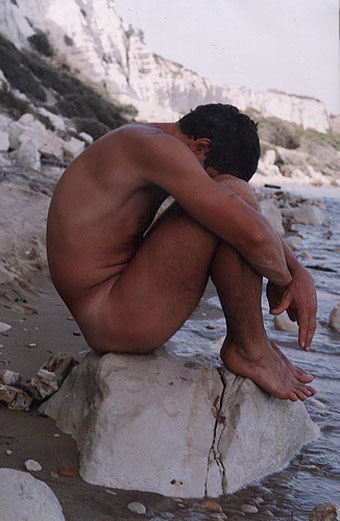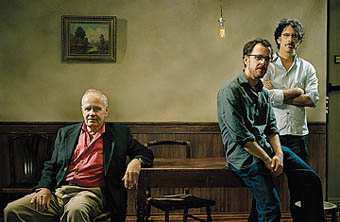Conceptual art should be allowed to speak for itself
| Good luck with getting any gallery to agree with that. The NS ponders Doris’s crack.
Author: John
The recurrent pose 10
The Flandrin pose turns up again on Flickr.
Elsewhere on { feuilleton }
• The recurrent pose archive
Horror in the shadows
Horror in the shadows
| Algernon Blackwood profiled.
Cormac and the Coens
CM, JC & EC photographed by Eric Ogden.
First an Oprah interview, now a feature in TIME; the famously reclusive Cormac McCarthy is almost becoming gregarious. The TIME piece is only a short sit-down between CM and the Coen Brothers which serves to promote the forthcoming film of No Country for Old Men but it’s still something this Cormac fan is happy to see. A shame it isn’t longer, I’d love to hear a tape of the full meeting. Thanks to Steve MacEacheran for the tip!
Previously on { feuilleton }
• Still No Country for Old Men
• Cormac and Oprah
• No Country for Old Men
The most hated album in jazz
The most hated album in jazz
| Miles Davis’s On the Corner.


